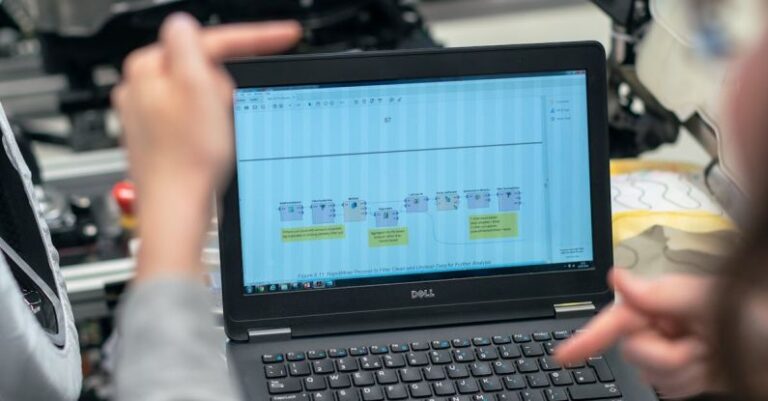
In today’s rapidly evolving digital landscape, the intersection of technology and creativity has given rise to the field of creative coding. Advanced creative coding programs equip individuals with the skills to blend programming knowledge with artistic expression, enabling them to create visually stunning and interactive projects. These programs go beyond basic coding principles to explore the limitless possibilities of technology in the realm of art and design. Let’s delve into the key features that define advanced creative coding programs and set them apart from traditional coding courses.
Exploring Visual and Interactive Design
One of the primary features of advanced creative coding programs is their emphasis on visual and interactive design. These programs allow students to experiment with various coding languages and tools to create dynamic and engaging visual experiences. By combining code with design principles, individuals can bring their ideas to life in the form of interactive animations, generative art, data visualizations, and more. Through hands-on projects and assignments, students learn how to use code as a medium for artistic expression, pushing the boundaries of traditional design practices.
Integration of Creative Tools and Technologies
Advanced creative coding programs often integrate a wide range of creative tools and technologies to enhance the learning experience. Students have the opportunity to work with industry-standard software and hardware, such as creative coding libraries, digital prototyping tools, interactive media platforms, and physical computing devices. By gaining exposure to these tools, individuals can explore innovative ways to merge code with other forms of media, creating immersive and multidisciplinary projects that blur the lines between art, technology, and design.
Emphasis on Collaboration and Community
Another key feature of advanced creative coding programs is their emphasis on collaboration and community building. These programs foster a supportive and inclusive learning environment where students can share ideas, collaborate on projects, and receive feedback from peers and instructors. By working together on group assignments and participating in community events, individuals gain valuable teamwork and communication skills that are essential in the creative industry. Additionally, being part of a vibrant creative coding community allows students to stay inspired, motivated, and connected with like-minded individuals who share their passion for technology and creativity.
Experiential Learning Through Real-World Projects
Advanced creative coding programs offer experiential learning opportunities through real-world projects that challenge students to apply their skills in practical settings. Whether working on client projects, participating in hackathons, or showcasing their work at exhibitions, individuals have the chance to gain hands-on experience and build a professional portfolio. By tackling complex problems, iterating on designs, and presenting their creations to a wider audience, students develop the confidence and resilience needed to succeed in the competitive creative industry.
Diverse Curriculum with Specialized Tracks
Advanced creative coding programs often feature a diverse curriculum with specialized tracks that cater to different interests and career goals. Students can choose to focus on areas such as game development, interactive storytelling, creative coding for the web, physical computing, and more. By selecting a track that aligns with their passions and aspirations, individuals can deepen their knowledge and expertise in a specific niche within the creative coding field. This specialization allows students to differentiate themselves in the job market and pursue careers that align with their personal interests and strengths.
Innovative Teaching Methods and Pedagogies
Lastly, advanced creative coding programs leverage innovative teaching methods and pedagogies to engage students and enhance their learning experience. These programs often incorporate project-based learning, design thinking workshops, guest lectures from industry professionals, and hands-on tutorials to provide a holistic and immersive education. By immersing students in a creative and collaborative learning environment, instructors empower individuals to think critically, experiment freely, and push the boundaries of what is possible with code and creativity.
In conclusion, advanced creative coding programs offer a unique and dynamic learning experience that combines technical skills with artistic expression. By focusing on visual and interactive design, integrating creative tools and technologies, fostering collaboration and community, providing experiential learning opportunities, offering specialized tracks, and utilizing innovative teaching methods, these programs equip individuals with the knowledge and skills needed to thrive in the ever-evolving creative industry. Whether aspiring to become a digital artist, creative technologist, interaction designer, or multimedia developer, advanced creative coding programs provide a solid foundation for pursuing a fulfilling and impactful career in the intersection of art, design, and technology.





